Case study spotlights benefits of minimally invasive approach
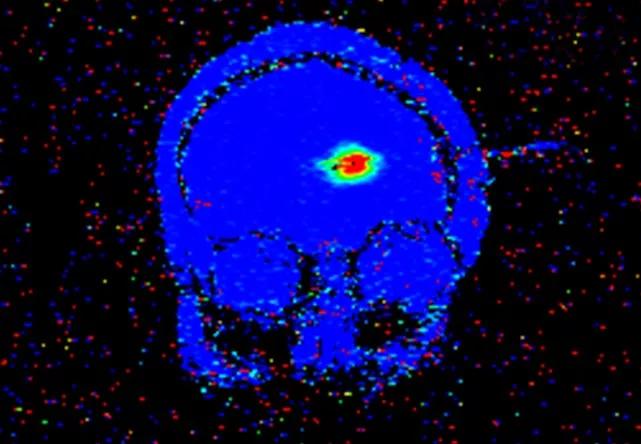
By Jorge Gonzalez-Martinez, MD, PhD, and Ahsan N.V. Moosa, MD
Cleveland Clinic is a non-profit academic medical center. Advertising on our site helps support our mission. We do not endorse non-Cleveland Clinic products or services. Policy
Laser ablation guided by real-time MRI, initially described in 2006 as a treatment for metastatic tumors, has shown promising results in the treatment of multiple intracranial pathologies including primary and metastatic lesions, epileptogenic foci and radiation necrosis.
The use of laser ablation to treat epileptogenic areas such as tubers (in tuberous sclerosis) and for mesial temporal sclerosis (via selective laser amygdalohippocampotomy), focal cortical dysplasias, hamartomas and post-stroke epilepsy has been described in the literature. The advantages of laser ablation are attributed to several factors:
All these attributes result in a potentially safer, more cost-effective and more efficient treatment option than other approaches for pediatric patients with medically intractable focal epilepsy. Laser ablation also provides access to areas where surgical treatment using conventional therapies would be contraindicated.
While Cleveland Clinic’s Epilepsy Center has previously published cases of laser ablation of epileptogenic lesions, the use of the robotic stereoelectroencephalography (SEEG) technique in combination with laser ablation to disrupt a specific epileptic network in patients with nonlesional epilepsy has not been reported. We have been performing this innovative work in adult and pediatric patients for more than a year, with promising results in terms of seizure control and safety. We share here another illustrative case report of a pediatric patient.
A 17-year-old male presented with a history of intractable epilepsy since age 9. He described his seizures as a “cold chill down the whole body” followed by partial awareness of subsequent events. His caregivers reported that the seizures began with a stare, changes in facial expression and pouting of the mouth, accompanied by changes in breathing pattern. He often walked aimlessly or made quick “robotic” movements. His seizures ended with a scream that startled anyone nearby and disrupted his social life. Although the seizures lasted only 15 to 20 seconds, they occurred as frequently as 20 times a day, and almost hourly during sleep.
The patient presented to Cleveland Clinic after failure to respond to eight different antiepileptic drugs and vagal nerve stimulation. His neurologic examination was normal.

Figure 1. Left frontal localization supported by noninvasive testing with FDG-PET (top), ictal single-photon emission computed tomography (middle) and magnetoencephalography (bottom).
Video EEG evaluation suggested a diagnosis of left frontal epilepsy based on interictal spikes and ictal patterns in a few seizures. Several other seizures, however, were poorly localized, with bifrontal involvement.
A 3T MRI of the brain did not reveal any lesion. FDG-PET showed focal hypometabolism in the left frontal region. Ictal single-photon emission computed tomography (SPECT) also showed hyperperfusion in the left anterior medial frontal region. Magnetoencephalography confirmed epileptiform discharges in the same region (Figure 1).
The absence of a lesion on brain MRI and localization in the dominant frontal lobe led to consideration of invasive monitoring with SEEG. This procedure was performed to map the epileptogenic zone and determine the margins of the resection.
During SEEG monitoring, the electrode in the left anterior mesial frontal area (L′, contacts 2, 3 and 4) showed focal and persistent repetitive spikes throughout the evaluation (Figure 2). All recorded seizures also arose from the same region (Figure 2). This was concordant with presurgical suspicions. Stimulation of the same regions elicited habitual seizures, further reinforcing the hypothesis.
After discussion with the patient and his family, we elected to perform laser ablation of the focus at the time of removal of the SEEG electrodes.
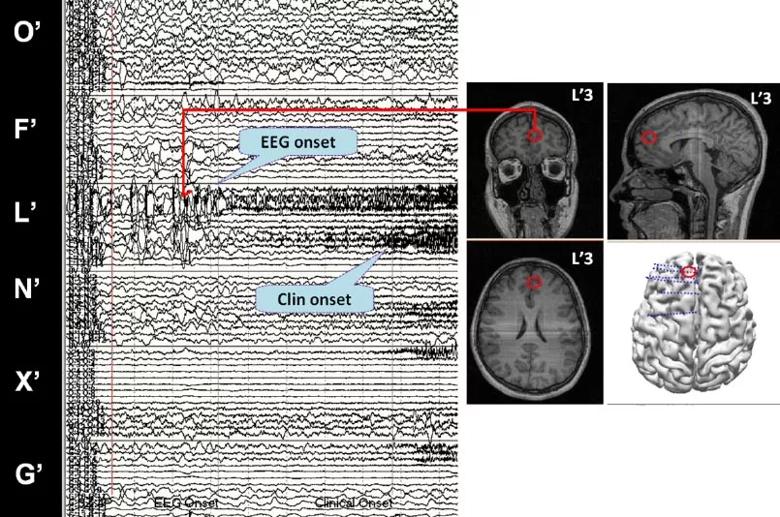
Figure 2. Localization of ictal onset to the left anterior mesial superior frontal gyrus (L′ 2-4) as confirmed by intracranial SEEG.
With the patient under general anesthesia, a small lesion centered at the previous location of the L′ electrode (left mesial frontal area, contacts 2, 3 and 4) was created, approximately 1 cm3 in volume (Figure 3). The treatment period, from insertion of the laser probe to the end of the lesioning phase, was five minutes. Afterward, the probe was removed, the incision was closed with one stitch and anesthesia was reversed. The patient was discharged from the hospital the next morning.

Figure 3. Intraoperative coronal and axial thermograms during MRI-guided laser ablation of the left mesial frontal area.
At three-month postoperative follow-up, the patient was seizure-free. He has had no change in personality or memory. However, his family reports a new “problem”: “Since surgery, we don’t know if he is at home or not!” they relate (because his seizure-associated screams have ended).
Our preliminary experience with the described method clearly illustrates the feasibility of a unique combination of robotic SEEG, laser ablation and intraoperative MRI in the management of pediatric patients with difficult-to-localize epilepsy. While further study is needed, the success of this procedure allows the possibility of a diagnostic-therapeutic combination unparalleled in its minimal invasiveness, reduction of treatment time and brevity of recovery time — all apparently without compromising efficacy.
Gonzalez-Martinez J, Vadera S, Mullin J, et al. Robot-assisted stereotactic laser ablation in medically intractable epilepsy: operative technique. Neurosurgery 2014;10(suppl 2):167-172.
Quigg M, Harden C. Minimally invasive techniques for epilepsy surgery: stereotactic radiosurgery and other technologies. J Neurosurg 2014;121(suppl):232-240.
Dr. Gonzalez-Martinez is an adult and pediatric epilepsy neurosurgeon in Cleveland Clinic’s Epilepsy Center.
Dr. Moosa, aka Ahsan Moosa Naduvil Valappil, is a pediatric epilepsy specialist in the Epilepsy Center.
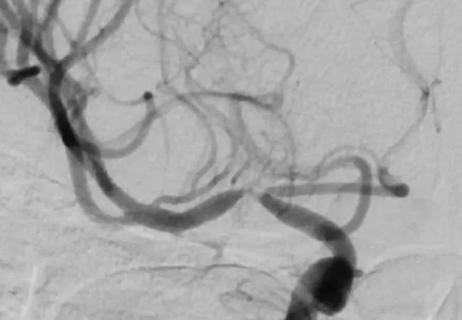
When specialized surgery makes sense for moyamoya syndrome

Multilevel cervical fusion restores function in an athletic 78-year-old

Case study underscores the imperative for thorough evaluation with SEEG
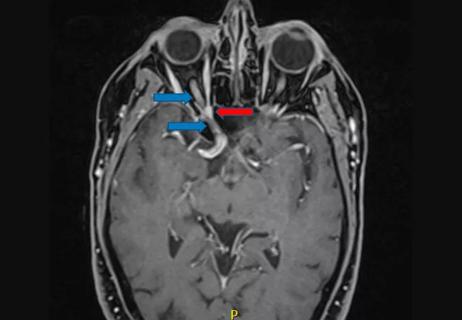
Schwannoma of the lacrimal nerve threatened right eye blindness

Case report demonstrates utility in a brain-injured patient

Partial resection plus radiation leads to good outcome from an unpredictable tumor

Diagnosis and treatment of rotational vertebrobasilar insufficiency syndrome
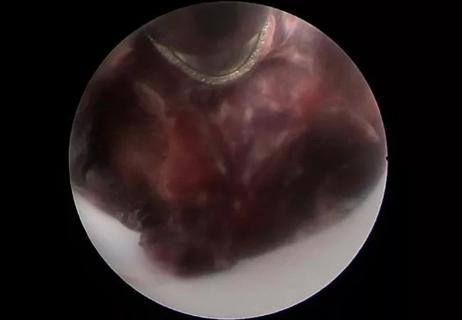
First reported case expands use of minimally invasive techniques